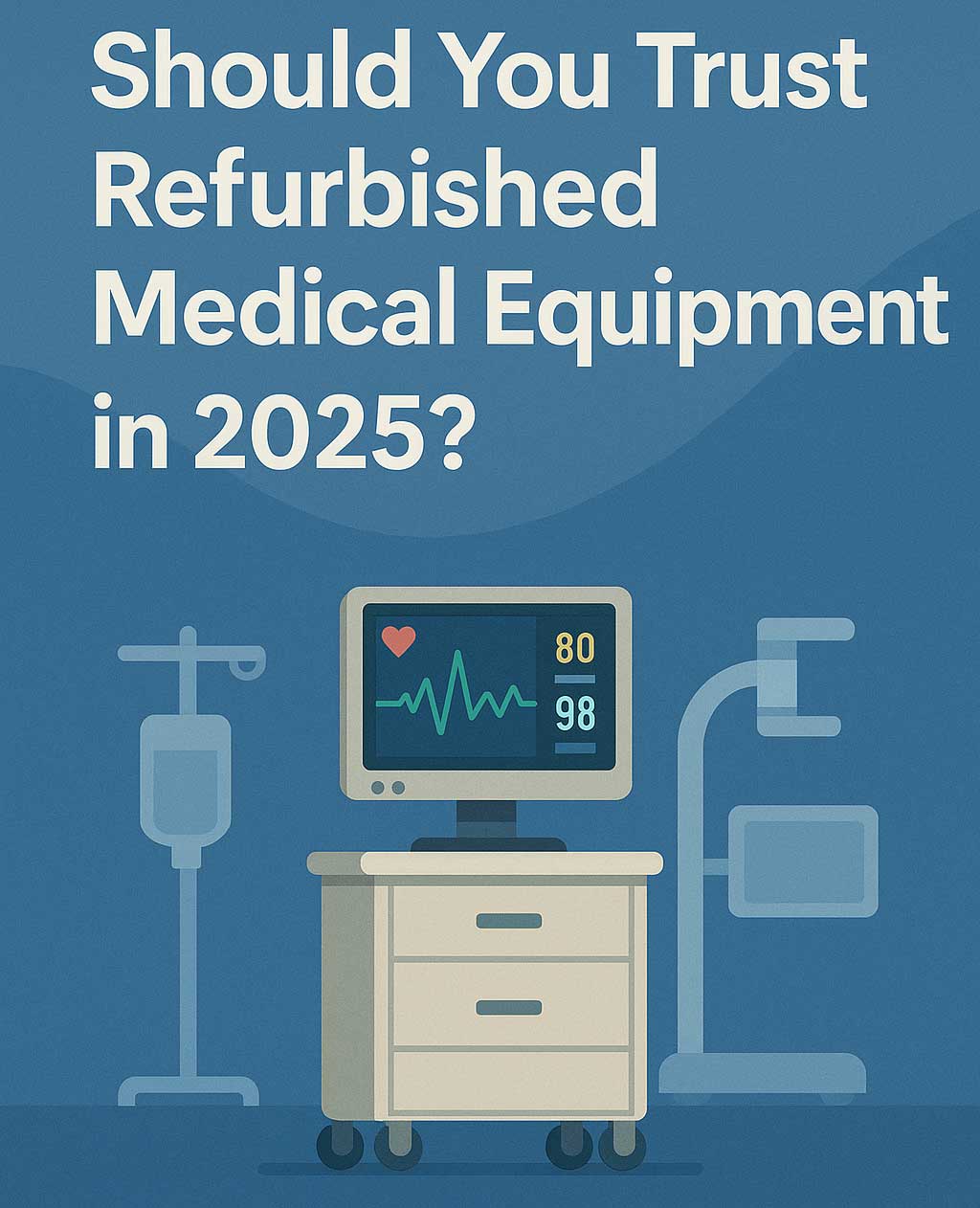In 2025, with healthcare costs continuing to rise and budget constraints tightening, many clinics and hospitals are turning to refurbished medical equipment as a smart alternative to buying new. But a critical question still arises: Is refurbished medical equipment truly trustworthy? In this article, we’ll explore what “refurbished” really means, the safety standards involved, and how to make the right purchasing decision in today’s fast-evolving medical technology landscape.

What Is Refurbished Medical Equipment?
Refurbished medical equipment is not simply “used.” It’s pre-owned equipment that has been professionally restored to meet manufacturer specifications. This includes cleaning, replacing defective components, recalibrating, retesting, and often updating the device’s software or firmware. Refurbished devices may also come with a warranty and compliance certificates.
Why Trust Refurbished Medical Equipment in 2025?
Here’s why refurbished equipment is not only trustworthy — but sometimes the smarter choice in 2025:
1. Advanced Refurbishing Standards
Reputable refurbishers now follow strict protocols certified by ISO 13485, FDA 510(k), or CE marking standards. These processes include full functional tests, detailed repairs, electrical safety checks, and cosmetic restoration.
2. Quality Comparable to New
In many cases, refurbished devices offer comparable performance to brand-new equipment at a fraction of the price — without compromising safety or accuracy.
3. Cost-Effective for Growing Facilities
Refurbished systems allow new and expanding medical facilities to invest in high-end diagnostic or surgical tools that would otherwise be unaffordable.
4. Warranty and Support in 2025
Today, most reputable vendors provide 6 to 24-month warranties, technical support, and optional service contracts — closing the trust gap between new and refurbished devices.
What to Look for Before Buying
Not all refurbished medical equipment is created equal. To ensure safety and reliability, follow this checklist:
- Certification: Ensure the equipment meets relevant regulations (FDA, CE, BPOM).
- Vendor Reputation: Work with ISO-certified or manufacturer-authorized refurbishers.
- Refurbishment Documentation: Ask for detailed reports outlining testing, parts replaced, and QA procedures.
- Warranty Terms: Choose equipment that includes a clear, written warranty and return policy.
- Visual & Functional Testing: Request demo videos or in-person inspection where possible.
Who Benefits Most From Refurbished Equipment?
Refurbished medical devices are a game-changer for:
- New medical practices trying to equip an entire facility on a budget
- Mobile clinics and telemedicine providers
- Veterinary or dental clinics using diagnostics and imaging
- Training institutions and simulation labs
- Public health initiatives in developing regions
Common Myths About Refurbished Medical Equipment
❌ Myth: Refurbished Means Low Quality
Truth: Refurbished devices go through strict testing and part replacements. They’re often sourced from top-tier hospitals that upgrade equipment regularly.
❌ Myth: It’s Not Safe for Clinical Use
Truth: Certified refurbishers ensure devices meet or exceed safety and calibration standards required by health authorities.
❌ Myth: No Warranty or Support
Truth: Most refurbished medical equipment in 2025 comes with warranties and service contracts just like new devices.
Conclusion: Yes, You Can Trust Refurbished Equipment in 2025
With today’s high standards, transparency, and warranties, refurbished medical equipment is a trustworthy, sustainable, and budget-friendly solution. Whether you're launching a new practice or upgrading diagnostics, buying from the right supplier ensures you get performance, safety, and savings — all in one smart investment.
